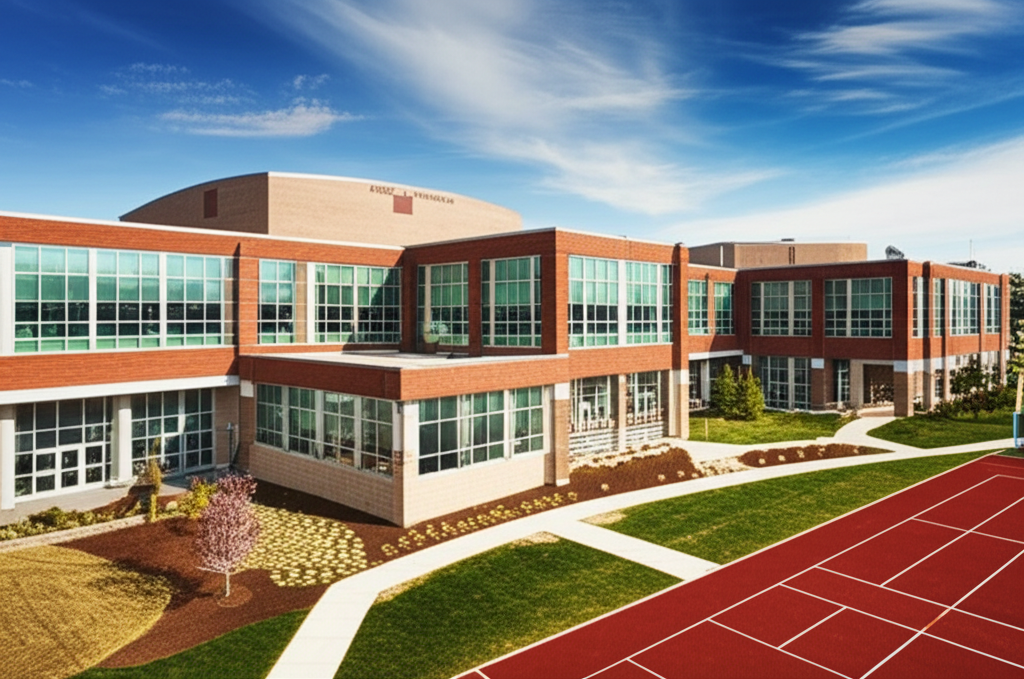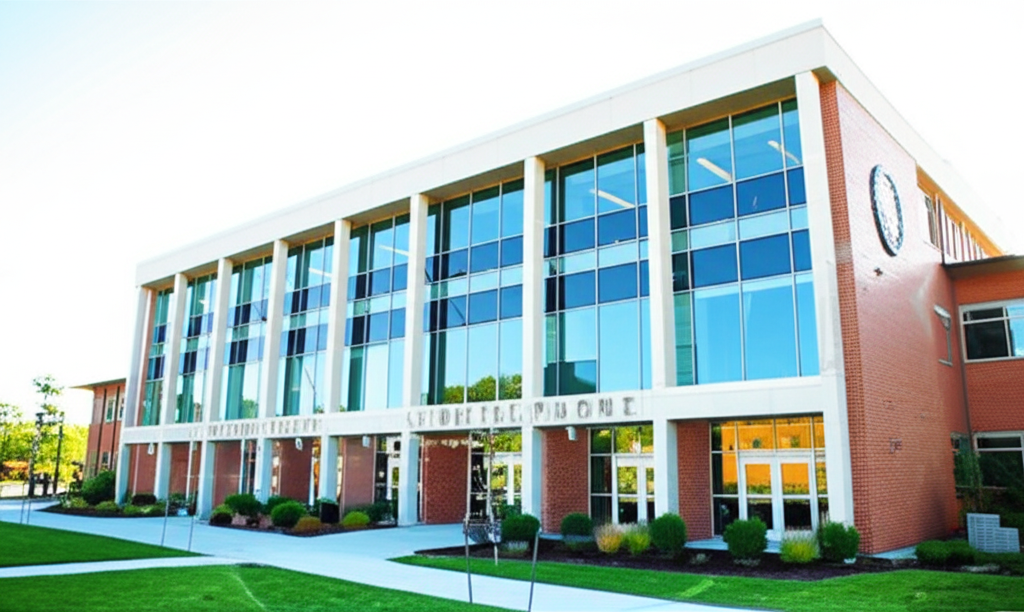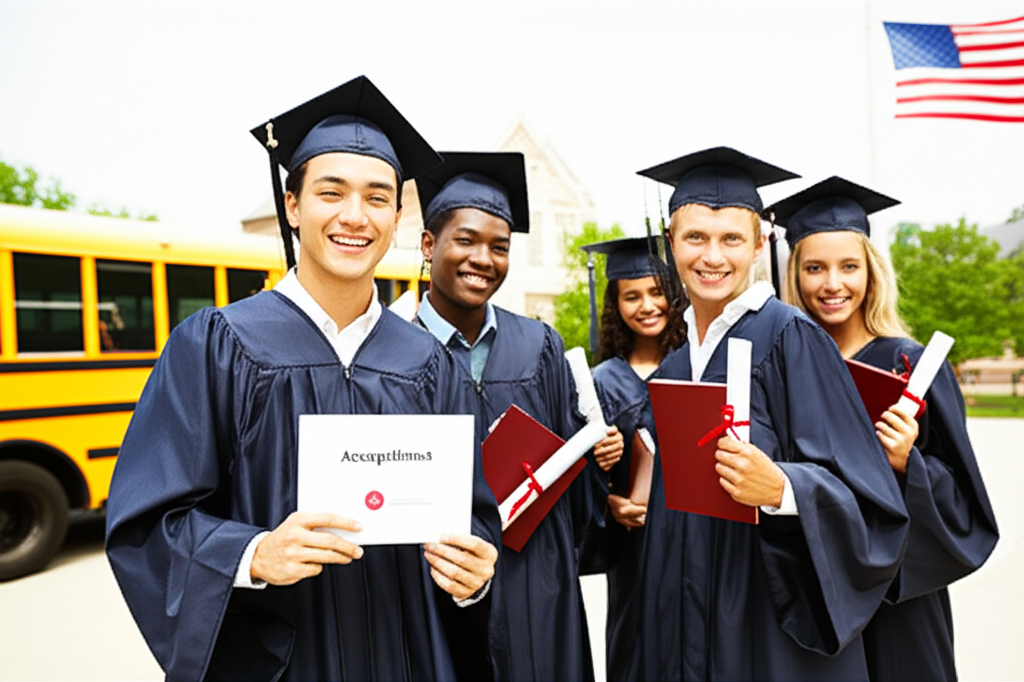Quick Summary: Discover the largest high schools in Pennsylvania! This guide highlights top picks, focusing on their impressive student bodies and what makes them stand out. Get insights into enrollment trends and how these big schools offer diverse opportunities for students.
When thinking about the largest high schools in Pennsylvania, you’re looking at institutions that serve a significant number of students, often bringing a wide range of programs and opportunities. These schools are hubs of activity, fostering diverse communities and offering extensive academic and extracurricular choices. Understanding which schools are the biggest can be helpful for families considering enrollment, exploring different educational environments, or simply curious about the scale of education in the state. This guide will walk you through what makes these schools stand out and how to identify them, making the process clear and easy to understand.
Understanding “Largest” in High Schools
The term “largest” when referring to high schools can mean a few different things. Most commonly, it points to the sheer number of students enrolled. A school with 3,000 students is significantly larger than one with 500. However, “largest” can also sometimes relate to the physical size of the campus, the number of buildings, or even the breadth of its course offerings and extracurricular activities. For this article, we’ll primarily focus on enrollment numbers, as this is the most common metric used to define school size and directly impacts the student experience.
Larger schools often have the resources to offer a wider array of Advanced Placement (AP) courses, specialized vocational programs, and a vast selection of clubs and sports teams. This can be a huge advantage for students seeking to explore specific interests or prepare for college with a broad range of experiences. On the other hand, some students thrive in smaller, more intimate settings. There’s no single “best” size; it truly depends on individual student needs and preferences. Our goal is to provide you with a clear picture of the biggest players in Pennsylvania’s high school landscape.
Why Size Matters: The Impact on Student Experience
The size of a high school can profoundly influence a student’s daily life and overall educational journey. Larger schools, like many of the largest high schools in Pennsylvania, often boast impressive facilities, including state-of-the-art science labs, extensive libraries, multiple gymnasiums, and expansive athletic fields. These resources can enrich learning and provide more opportunities for students to engage in hands-on activities and advanced studies.
Furthermore, a large student body typically translates into a wider variety of clubs, sports, and arts programs. Whether a student is interested in robotics, debate, drama, or a specific sport, there’s a higher likelihood of finding a group or team that matches their passion in a bigger school. This diversity of offerings can help students discover new talents, build leadership skills, and form lasting friendships with peers who share similar interests. The sheer number of students also means a greater diversity of backgrounds, perspectives, and experiences, which can broaden a student’s worldview.
However, navigating a large school can sometimes feel overwhelming. Students might find it harder to get individual attention from teachers or counselors compared to smaller schools. The competition for spots on teams or in popular clubs can also be more intense. It’s a trade-off that families often weigh carefully when choosing a school environment that best suits their child’s personality and learning style. Understanding these nuances is key to appreciating what the largest high schools in Pennsylvania offer.
Identifying the Largest High Schools in Pennsylvania

Pinpointing the exact list of the largest high schools in Pennsylvania can shift slightly year by year due to enrollment fluctuations. However, several school districts consistently house some of the most populous high schools in the Commonwealth. These institutions are often located in or near major urban centers and growing suburban areas where population density is highest.
To find this information, reliable sources include the Pennsylvania Department of Education (PDE), which collects and publishes data on all public schools. Websites that focus on school rankings and statistics, such as Niche.com or U.S. News & World Report, also often provide enrollment figures. When looking at these sources, pay attention to the reported enrollment numbers for public high schools across different districts.
It’s important to remember that “largest” is a dynamic figure. A school that was among the top five last year might be slightly lower this year, and vice-versa. However, the general trend of which districts and areas contain the most students typically remains consistent. We will explore some of these consistently large schools below.
Top Picks: Notable Large High Schools in Pennsylvania
While a definitive, universally agreed-upon “top picks” list for the largest high schools in Pennsylvania can be subjective and change annually, we can highlight institutions that are consistently recognized for their significant student populations and robust offerings. These schools are often leaders in their respective regions and provide a comprehensive educational experience.
Here are some of the schools that frequently appear when discussing the largest high schools in Pennsylvania, based on their substantial enrollment numbers and their reputation for academic and extracurricular breadth:
Central Dauphin High School (Harrisburg Area)
Central Dauphin High School, part of the Central Dauphin School District, is often cited as one of the largest high schools in Pennsylvania. Serving a diverse student body, it offers a comprehensive curriculum, including a wide range of AP and honors courses, career and technical education programs, and a plethora of extracurricular activities. Its size allows for specialized programs and a broad spectrum of student interests to be catered to.
Methacton High School (Montgomery County)
Located in the suburban Philadelphia area, Methacton High School is another institution known for its large enrollment. The school prides itself on providing a challenging academic environment alongside a vibrant community life. With numerous athletic teams, arts programs, and student organizations, Methacton offers students ample opportunities to get involved and develop their skills. Their commitment to academic excellence is reflected in their diverse course catalog.
Pennsbury High School (Bucks County)
Pennsbury High School, situated in Bucks County, consistently ranks among the largest high schools in the state. This sprawling campus houses a significant student population, benefiting from extensive facilities and a wide array of academic and extracurricular options. Pennsbury is known for its strong commitment to student success, offering a robust curriculum that prepares students for college and future careers. The school’s size facilitates a rich tapestry of student life, from competitive sports to creative arts and academic clubs.
North Allegheny High School (Allegheny County)
In the Pittsburgh metropolitan area, North Allegheny High School is a prime example of a large, highly regarded public school. It serves a substantial number of students, offering advanced academic programs, including a significant number of AP courses, and a wide range of electives. The school is also recognized for its strong performance in athletics and its commitment to fostering a well-rounded student body. Its resources are often leveraged to provide specialized learning opportunities.
Great Valley High School (Chester County)
Great Valley High School, part of the Great Valley School District in Chester County, is another institution that frequently appears on lists of Pennsylvania’s larger high schools. It offers a robust academic program with many advanced learning opportunities and a strong emphasis on preparing students for post-secondary education. The school’s size supports a diverse range of extracurricular activities, allowing students to explore their interests and develop leadership skills in a supportive environment.
Enrollment Trends and What They Mean
Enrollment trends in Pennsylvania’s high schools are influenced by a variety of factors, including birth rates, migration patterns, and residential development. Areas experiencing population growth, particularly in suburban regions around major cities like Philadelphia and Pittsburgh, tend to see larger high school enrollments. Conversely, some rural or economically challenged areas may face declining student numbers.
The Pennsylvania Department of Education provides valuable data on these trends. For instance, reports from the Pennsylvania Department of Education (PDE) School Statistics can offer insights into enrollment figures for individual schools and districts over time. Understanding these trends helps paint a picture of the educational landscape and the resources allocated to different regions.
What does this mean for students and families? For those in areas with large, growing high schools, there’s often a wealth of opportunities. However, it also means a competitive environment for certain programs or positions. For families in areas with smaller or declining schools, the focus might be on maximizing the resources available, fostering a strong community, and seeking out specialized programs that might be offered through regional collaborations or cyber options. Recognizing these enrollment dynamics is crucial for making informed decisions about education.
Navigating a Large School: Tips for Success

Attending one of the largest high schools in Pennsylvania can be an exciting experience, filled with diverse opportunities. However, it also requires a proactive approach to ensure students make the most of their time. Here are some practical tips for students and parents to navigate a large school environment effectively:
- Get Organized Early: Large schools mean more classes, more teachers, and more activities. Encourage students to develop strong organizational habits from the start. Using a planner, digital calendar, or organizational app can help keep track of assignments, deadlines, and extracurricular commitments.
- Seek Out Counselors and Teachers: While teachers and counselors in large schools have many students, they are there to help. Encourage students to introduce themselves early in the year, attend office hours, and don’t hesitate to ask for clarification or support. Building these relationships can make a big difference.
- Explore Extracurricular Activities Strategically: With so many options, it’s easy to get involved in too much or not enough. Help students identify a few activities that genuinely interest them and commit to them. This allows for deeper engagement and skill development rather than superficial participation in many.
- Utilize School Resources: Large schools often have extensive resources, such as tutoring centers, college and career counseling offices, libraries with specialized databases, and technology labs. Make sure students know where these resources are and how to access them.
- Build a Support Network: Encourage students to connect with classmates, whether through shared classes, clubs, or sports. Having a group of friends can provide academic support, social connection, and a sense of belonging within the larger school community.
- Communicate with Parents/Guardians: Open communication is key. Students should feel comfortable sharing their experiences, challenges, and successes with their parents or guardians. Parents can then offer guidance, support, and help advocate for their child’s needs within the school system.
Comparing Opportunities: Large vs. Small High Schools
Choosing between a large and a small high school is a significant decision, and understanding the differences in opportunities can guide this choice. The largest high schools in Pennsylvania, as discussed, offer a breadth of choices that smaller schools often cannot match.
Here’s a general comparison:
| Feature | Large High Schools | Small High Schools |
|---|---|---|
| Course Offerings | Wide variety of AP, IB, vocational, and elective courses. Specialized programs are common. | More focused curriculum, potentially fewer advanced or specialized electives. |
| Extracurricular Activities | Extensive options in sports, clubs, arts, and academic teams. Often multiple levels of participation. | Fewer options, but often with more opportunities for leadership roles and significant participation. |
| Student-Teacher Ratio | Typically higher, meaning less individual attention per student. | Typically lower, allowing for more personalized instruction and interaction. |
| Sense of Community | Can be harder to build a strong sense of community; students may feel like a number. Requires effort to find a niche. | Easier to foster a close-knit community; students often know each other and staff well. |
| Resources and Facilities | Often have state-of-the-art facilities, extensive libraries, and specialized equipment due to larger budgets. | May have more limited facilities and resources, but often make excellent use of what they have. |
| Social Dynamics | More diverse social groups and opportunities to meet a wide range of people. Potential for more social cliques. | Smaller social circles, potentially less diversity. May feel safer and less intimidating for some students. |
The “best” choice depends entirely on the student. A student who is self-motivated, enjoys variety, and can navigate larger systems might thrive in one of the largest high schools in Pennsylvania. Conversely, a student who prefers personalized attention, a close-knit community, and a more focused environment might be better suited to a smaller school. It’s about finding the right fit for individual needs and learning styles.
Considering Other Factors Beyond Size
While exploring the largest high schools in Pennsylvania is interesting, size is just one piece of the puzzle. Several other factors are crucial when evaluating a school and ensuring it’s a good fit for a student:
- Academic Programs and Performance: Look at graduation rates, college acceptance rates, standardized test scores (like SAT/ACT), and the availability of specific programs (e.g., STEM, arts, vocational). The Pennsylvania System of School Assessment (PSSA) and Keystone Exams data can also offer insights into academic achievement.
- School Culture and Climate: Is the school environment safe, supportive, and inclusive? Do students feel respected and valued? School climate surveys or talking to current students and parents can provide valuable insights.
- Teacher Quality and Experience: The dedication and expertise of teachers are paramount. Research teacher qualifications, student-teacher ratios in specific subjects, and professional development opportunities offered to staff.
- Location and Commute: Consider the daily commute for students and parents. Proximity to home, availability of school buses, or public transportation options are practical considerations.
- Parent and Community Involvement: Schools with active parent-teacher organizations (PTAs/PTOs) and strong community ties often provide a richer educational experience and better support for students.
- Special Needs and Support Services: If a student requires special education services, gifted programs, or counseling, ensure the school has robust and well-resourced support systems in place.
By considering these elements alongside school size, families can make a more comprehensive and informed decision about the best educational path for their child.
Frequently Asked Questions (FAQ)
What is the definition of a “large” high school in Pennsylvania?
Generally, a “large” high school in Pennsylvania refers to those with significantly high student enrollment numbers. While there’s no official threshold, schools with student bodies exceeding 2,000 to 3,000 students are typically considered large. This is primarily based on enrollment data collected by the Pennsylvania Department of Education.
Are the largest high schools always the best?
Not necessarily. “Best” is subjective and depends on individual student needs and preferences. Large schools offer many opportunities and resources, but smaller schools can provide more personalized attention and a closer-knit community. It’s about finding the right fit for each student.
How can I find the most up-to-date enrollment numbers for Pennsylvania high schools?
You can find the most current enrollment data on the Pennsylvania Department of Education (PDE) website, specifically in their School Statistics section. Educational ranking websites like Niche.com or U.S. News & World Report also often provide enrollment figures for individual schools.
What are the benefits of attending a large high school?
Benefits include a wider variety of academic courses (like AP and specialized electives), a broader range of extracurricular activities (clubs, sports, arts), access to extensive facilities and resources, and exposure to a more diverse student population.
What are the potential drawbacks of attending a large high school?
Potential drawbacks include higher student-to-teacher ratios, less individual attention from staff, increased competition for spots in popular programs or teams, and the possibility of feeling lost or overwhelmed in a large student body.
How do I decide if a large high school is right for my child?
Consider your child’s personality, learning style, and social preferences. If they are self-motivated, enjoy variety, and can thrive in a bustling environment, a large school might be a good fit. If they prefer a more intimate setting and personalized support, a smaller school might be better. Visiting schools and talking to current students and staff can also help.
Conclusion
Exploring the largest high schools in Pennsylvania reveals institutions that are vibrant centers of learning and activity, catering to thousands of students. These schools, often characterized by their substantial enrollment, offer a rich tapestry of academic programs, extracurricular pursuits, and diverse student experiences. While size brings advantages like extensive resources and a wide array of choices, it also presents unique challenges that require proactive navigation.
Understanding what makes these schools stand out, from their diverse course offerings to their bustling communities, is key for students and parents making important educational decisions. By weighing the benefits of size against individual learning needs and considering other critical factors like academic quality, school culture, and available support services, families can confidently choose the educational environment that best fosters their child’s growth and success. Whether drawn to the vast opportunities of a large institution or the focused environment of a smaller school, the goal remains the same: to find the perfect setting for a rewarding and impactful high school journey.

